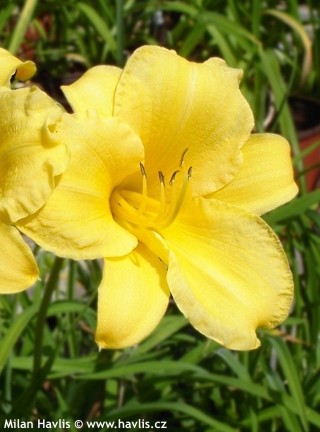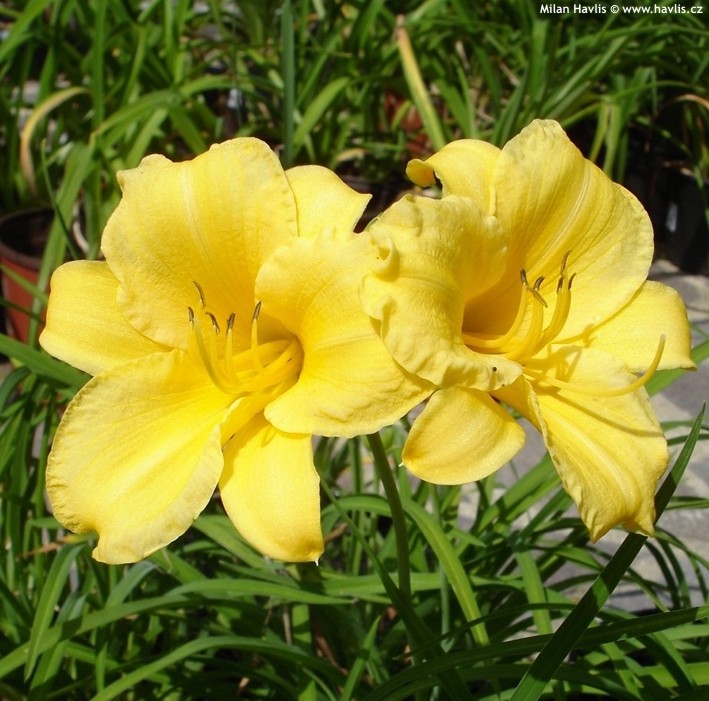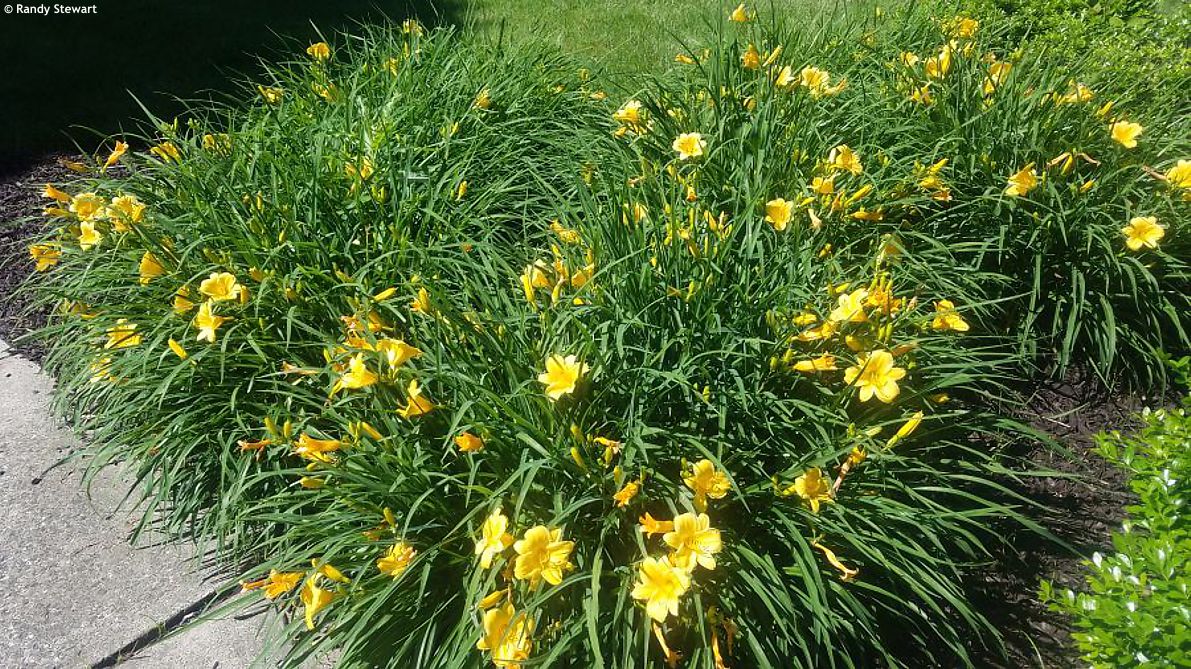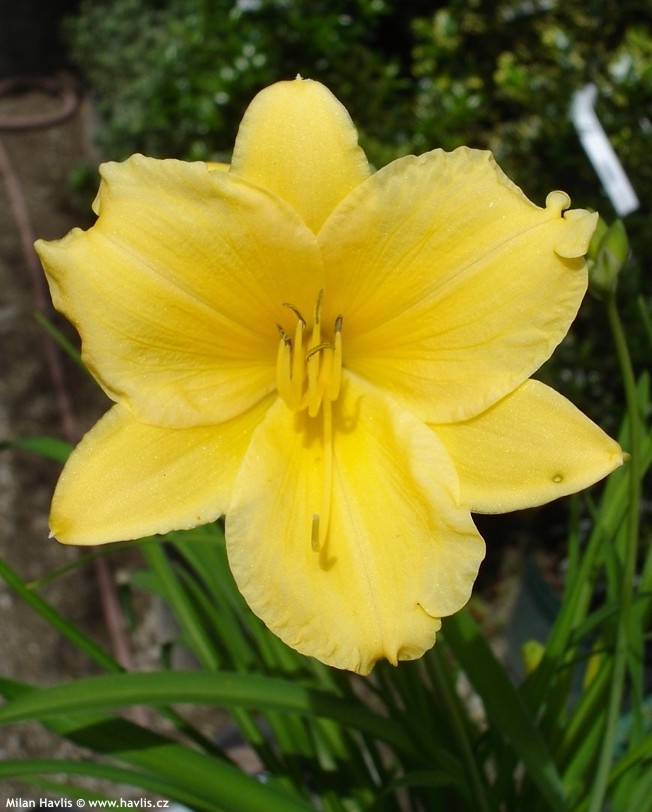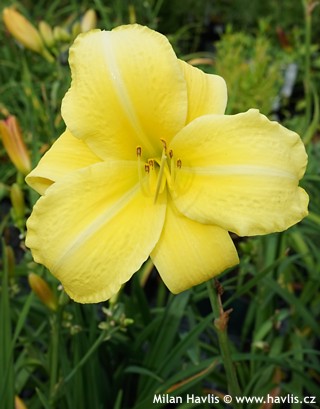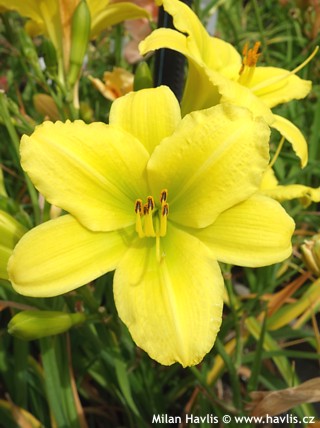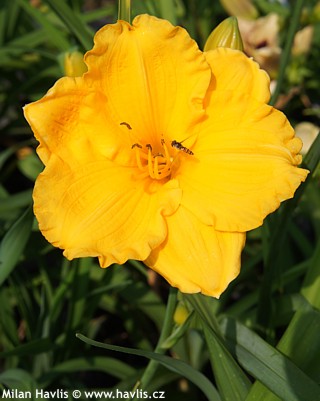Hemerocallis 'STELLA de ORO' daylily
Hemerocallis
Daylilies are flowering queens for one day. Each bloom lasts a day but there is no need to worry – every stem bears more blooms and as the plants grow older they have numerous stems each.
Stella de Oro is the top brand among daylilies. It blooms most abundantly and longest of all varieties. Its flowers are bright yellow, 7-8 cm across, broadly funnel-shaped, open wide, and appear in profusion in early summer, and continue re-blooming atop thin, 30-40 cm tall, slightly arching stems until early autumn. The leaves are narrower compared to other hybrids, grass green, and form a dense clump.
It was bred by Walter Jablonski (1896-1986) from Merrillville in Indiana, USA, and introduced in 1975. He named it after a box of cookies of the same name when he wanted to make a break during a hot day work. For a moment he glanced at the cookie box and at his novelty he thought that a butter cookie name is good enough for a bright yellow daylily.
This variety was a breakthrough in daylily world. It was historically the first documented variety with repeat blooming which brought these care-free perennials to public interest. Suddenly daylilies, first mostly Stella de Oro but later also other varieties, became an important feature of public greenery as well as private gardens all around the world. Thanks to one breeder and his cookie-named flower.
The leaves are deep green, strong and healthy. They appear early in the spring and persist until winter unlike spring bulbs whose leaves wither away after flowering. Apart from occasional slug attack there are no pests or diseases they would suffer from. Put your day lilies on a sunny spot and fertilize it for better flowering every spring, if you want to. It tolerates all types of soil, preferably it likes moist soil. Extremely hardy to -45°C (USDA zone 2).
Last update 31-08-2013; 29-12-2020

































